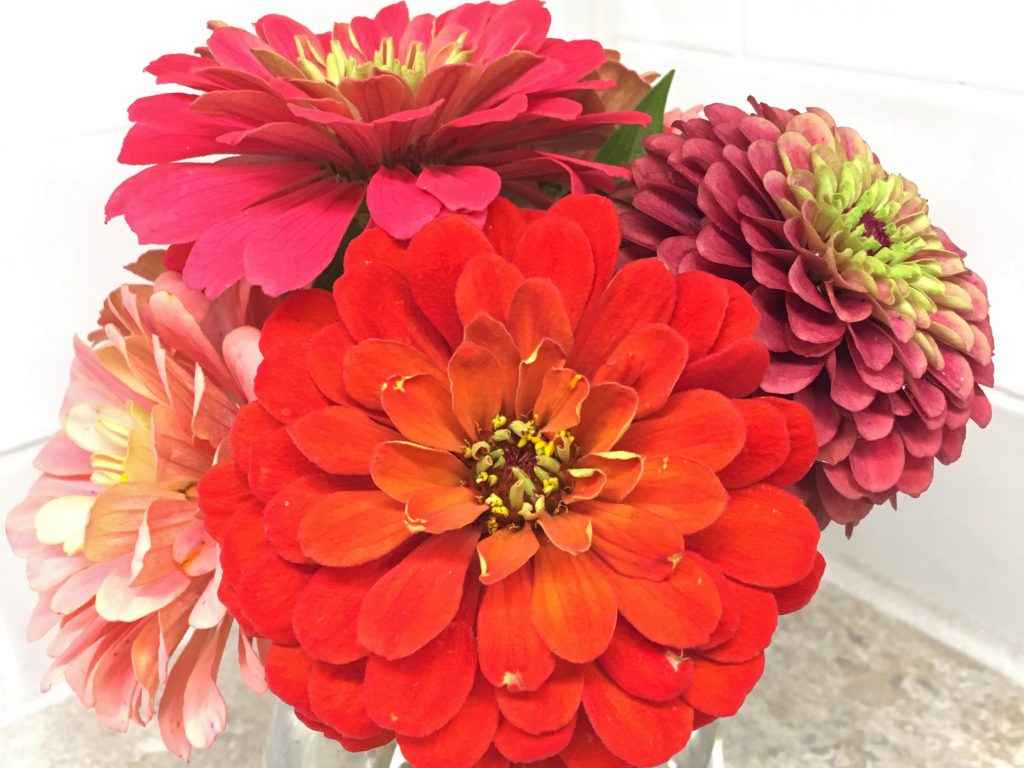Creating a Cutting Garden

When I first started gardening, I discovered how wonderful it was to have fresh cut flower bouquets in the house. But there was a problem. Every time I went out to cut flowers, I hesitated. If I cut enough for a bouquet, would there be enough of them left outside? Or would my flower garden look sad and bare? It was quite a dilemma … until I discovered the joys of the cutting garden. What exactly is a cutting garden? It’s like a vegetable garden, but for flowers. You grow flowers as a crop to be cut down and used elsewhere. It may sound like a lot of work, but really it isn’t hard.
Just like vegetables, you can grow flowers in any sunny spot, preferably one that is a little out of the way as it isn’t going to look great all the time. Most cutting gardens are done in rows, with flowers planted a little more closely together than in ornamental gardens. Yours can be any shape, though, keeping in mind you will need to be able to reach the flowers to cut them. It is probably best to keep things no more than 3-4 feet wide before creating a pathway through them. A cutting garden can be a raised bed, or just a patch of dirt. It can be as big or as small as you’d like. A 4×4 or 4×6 foot patch is a good place to start.
I highly recommend growing annuals because most will flower again and again. The more flowers you cut, the more they grow! Many can be grown by seed, which makes them very inexpensive to grow. Some, but not all, seeds will need to be started indoors in early to mid-spring. Or you can purchase plants from the greenhouse after the danger of frost has passed. Perennials, which are slightly more expensive, come back every year, but often won’t re-bloom once cut. You will often need a larger space to create a cutting garden of perennials. I plant a cutting garden with annuals, and then cut a few flowers from my regular perennial garden here and there to supplement them.
Here are a few tips to get you started.
• Flowers like rich fertile soil, so add lots of compost before planting.
• Fertilize with a granular fertilizer when you plant, and supplement that throughout the season.
• Give them plenty of water, just like a vegetable garden. Water a minimum of once a week, preferably in the morning. More often in warm weather.
• Mulch the rows. This will cut down on weeds and help keep the soil moist.
• Tall flower varieties work better than short ones. Good annuals to try include Bells of Ireland Bachelor’s Button, Celosia, Cleome, Love Lies Bleeding, Marigold, Osteospermum, Pansy, Salpiglossis, Snapdragon, Statice, Stock, Sunflower, Sweet Pea, and Zinnia.
• Pick flowers often. You’ll get more flowers that way.
• When harvesting flowers, use a clean sharp shears, and put each flower in a bucket of water immediately.
• Before putting cut flowers in a vase, cut the stems again. Cutting at a 45-degree angle allows them to take up more water.
• Change the water in the vase daily. Your flowers will last longer.
• If you have too many flowers, give a bouquet to a neighbor or friend, or drop some off at a nursing home.
If you have any questions about creating your own cutting garden, please let us know. We are happy to help you get started.
